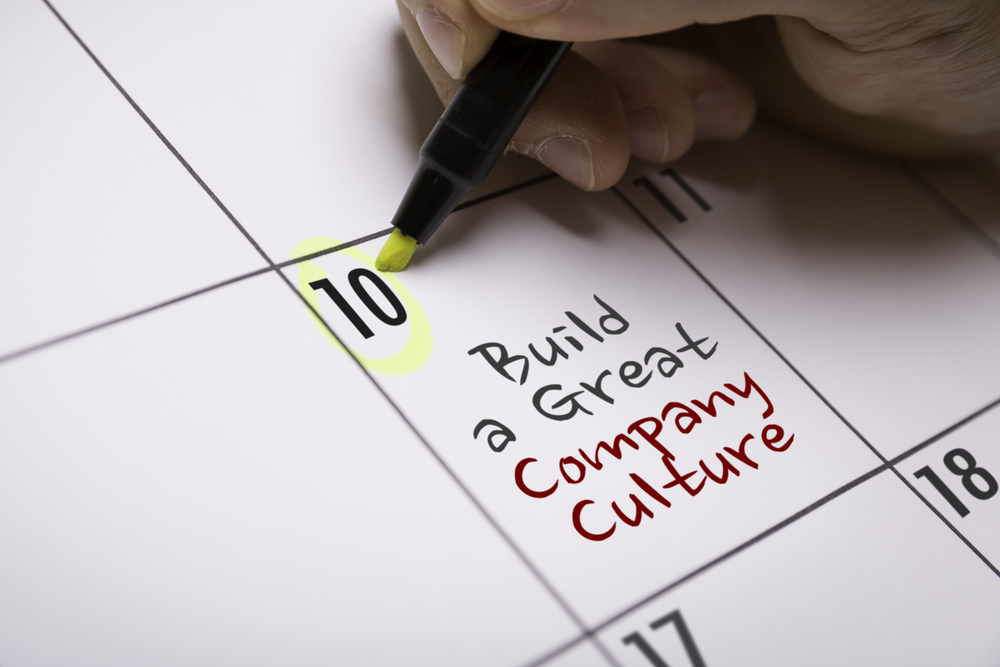
by Rene Street | Sep 16, 2023 | Blog, Business, Business
In an era marked by immense volatility and complexity, characterized by technological advancements, business consolidations, fierce competition, and economic fluctuations, you may find yourself in an unprecedented time of change. The aftermath of the pandemic continues to linger, with burnout, stress, and overwhelm persisting among individuals and teams. Amidst this tumultuous landscape, the challenge is this: How can organizations emerge stronger from the trials of recent years? How can they cultivate a culture that thrives, adapts, and responds effectively to the unpredictable? The answer lies in fostering an emergent culture – one characterized by change management prowess, response agility, and a positive environment with fulfilled employees.
Understanding Culture
When more than two people come together, whether as a couple, a family, or a company, they form a human system. Within this system, culture serves as the driving force or energy. Culture possesses the power to create and destroy, providing guidelines for interaction, conflict resolution, motivation, and progress. The objective of examining and shaping organizational culture is to channel the collective energy of individuals into a productive force – one that mirrors the synchronicity found in natural phenomena, such as the coordinated movements of a school of fish or flock of birds. This is called an emergent culture.
Influencing Culture
Effective impact on company culture entails understanding and influencing the energy inherent within the human system. To initiate this process, focus on the following areas:
Start With The Leader
All culture begins with the CEO; the leader of the organization. What is their vision? Who are they as a leader? What are their values? Are they operating and living congruent with all of those markers, no matter how challenging or stressful the circumstances may be? Having a CEO who can answer those questions clearly and can live in alignment with them consistently is the foundation on which a company’s culture gets built. If the CEO is frazzled, overwhelmed, and in survival mode, that is going to set the tone for the entire organization. Whatever energy the CEO brings to the company and to their life will be the energy that other people pick up on and assimilate to in order to fit in and make it.
Thus, the CEO must be conscious. They must be awake and aware of what they’re emanating through their words and their actions. They must ensure that they have a clear vision, bolstered by positive moods and inspiring language that rallies people around their vision and engages them into action. Human systems are guided by behaviors, beliefs, actions, what’s said, what’s unsaid – all of that equates to the energy of the human system, and energy is culture. So, what kind of culture is the CEO creating?
Cultivate the Leadership Team
The leadership team further propagates cultural attributes throughout the organization. Behaviors exhibited by this team tend to cascade down to various departments. Similar to the CEO, leadership must demonstrate consciousness and accountability for their actions. This includes acknowledging their role in shaping the culture and undertaking personal growth to support a healthy, high-performance human system. By focusing on the following key elements, the leadership team can contribute to a thriving culture:
- Achievement. The company knows what they’re here to do, why they’re doing it, and how they’re measuring it. Organizational achievements are individual achievements, and vice versa. Achievements are specific, measurable, attainable results that are bound in time.
- Self-actualization. Each person is conscious. They know what their strengths and weaknesses are, and they’re responsible for them and the impact they have on others. They’re doing their own development and personal work just like the CEO is.
- Affiliation. People are partnering, collaborating, sharing ideas, and problem solving on an interdepartmental level. Cross-functional teams are committed to the noble cause and vision for the organization and are coming up with ways to problem solve together to fulfill the vision.
- Humanistic Managers. Managers authentically care about their people. They are aware of what’s going on in their employees’ lives, what their goals are, and how they want to grow. When an employee knows to their core that their manager has their best interests at heart and they want them to thrive, difficult conversations to improve performance can happen. Mentorship, coaching, and caring for people comes with humanistic management, and it supports employees who grow and thrive.
Assess Environment and Employees
Employee behavior provides insights into the prevailing environment. Key considerations include whether they experience autonomy, trust, and support in their roles. Ask these questions to assess the environment that your employees are navigating:
- How well do employees handle changes and upsets and challenges in the market?
- Do people feel the freedom and trust to share new ideas, take risks and have space to fail?
- Is there space in the time at work to ideate, innovate and co-create?
- Are the meetings inspirational and motivating or just a laundry list of getting things done?
- Is everyone clear on what the noble cause is?
- Is the right architecture or systems in place for people to work effectively together?
- Is the leadership team dismantling anything getting in the way of employees taking the ball and running with it?
- If there’s a problem, are the employees the ones to solve it?
- Are people being given the autonomy they need?
- Are people held accountable to their agreements and promises and measures?
- Can you have difficult conversations?
Achieving Resilience Through Emergent Culture
In times of uncertainty, organizations with the ability to adapt and pivot harness their power. Such resilience hinges on a healthy human system and a shared commitment to the company’s purpose. Leadership needs to exemplify responsibility, optimism, and collaborative problem-solving across departments to overcome obstacles and realize the company’s vision. This approach cultivates an emergent culture, capable of navigating challenges effectively.
While creating an emergent culture demands considerable dedication, care, and focus, the rewards are boundless. With a culture founded on change management skills, response agility, and employee fulfillment, organizations can not only weather storms but also soar to new heights.
About the Author, Margaret Graziano
Margaret Graziano is the founder and CEO of KeenAlignment, as well as a Wall Street Journal Best-Selling Author for her book “Ignite Culture.” She has been recognized as one of Silicon Valley’s Top 100 Women Leaders. Magi’s groundbreaking work is driven by her power to uncover and catalyze human potential. Go to https://keenalignment.scoreapp.com to take KeenAlignment’s Culture Assessment and see if you have an Emergent Culture.

by American Business Women's Association | Jul 17, 2023 | Blog, Business
When we think about famous visionary thinkers, we subconsciously assume that they have some magic characteristic that the rest of don’t have or can’t achieve. But in reality, the only magic they have is an intuitive understanding of how to avoid some very common creative thinking blocks. One of those blocks is the Curse of Knowledge, a cognitive bias, or mental shortcut, that all humans share.
Stuck Inside the Box: The Curse of Knowledge
You’ve probably heard the term “Thinking outside the box.” And you’ve probably, at some point in your career, been asked the think outside the box. But without any understanding of why the box is there or how it was created, it’s hard to know how to break out of it. The reality is that we each create our own “box”, through this Curse of Knowledge.
To understand this concept, imagine for a moment that your task is to think of new ideas for salad dressing. Try to come up with a few in your mind right now – don’t skip ahead!
Chances are, the ideas that came to your mind were incremental variations of existing flavors or ingredients. You may have thought of fruit-flavored dressing. Or spicy, chipotle dressing. Or perhaps dressing that’s flavored like your favorite cocktail. Or your favorite dessert.
All really interesting ideas, IF you are only looking for ideas that don’t change the current nature of salad dressing, nor the way it’s currently manufactured, packaged, sold, or used. The task was to find NEW ideas for salad dressing. That challenge was not limited to simply new flavors, but your brain likely limited your thinking to mostly just new flavors.
Here’s why incremental ideas tend to be the first, and sometimes the only, kind of ideas to emerge. All humans rely on past knowledge to subconsciously try to shortcut problem-solving. We instantly – and subconsciously – call on everything we know from the past to come up with solutions for the new problem. While this ability to call on past learning is an incredibly useful trait in many situations (it’s one of the reasons we’re at the top of the food chain), when you’re looking for new ideas and solutions, it actually becomes a significant barrier. It limits your thinking to nothing but slight variations of what already exists.
The minute you saw the words “salad dressing”, your brain made a bunch of instantaneous assumptions that you’re likely not aware of. Those assumptions were probably things like:
- Salad dressing comes in a bottle.
- It’s liquid.
- It’s stored in the refrigerator.
- It’s used on lettuce.
- Salad is eaten from a bowl or plate.
- Salad is eaten with a fork.
Using the salad dressing challenge again, now assume one of the above “facts” does NOT have to be true. What ideas could you come up with then? You might think of ideas like:
- Salad dressing that you heat in the microwave (not cold).
- Dressing for fruit, or for meat (not used on lettuce).
- A powder whose full flavor is activated when it contacts the moisture of the lettuce (not liquid).
- Salad dressing in the form of a wrap, so you can eat the salad on the go (salad isn’t served on a plate).
- Salad dressing in the form of an edible skewer (salad isn’t eaten with a fork).
As you can see, the nature of the ideas that arise after crushing the imbedded assumptions is dramatically different from the ideas that came before. That’s because your brain is no longer limiting your creativity with artificial guardrails that may not actually exist and that you weren’t even consciously aware of.
Interestingly, the more expertise you have in an area, the more of these limiting assumptions you have subconsciously imbedded in your thinking. So, as an expert in your field, you likely have MANY imbedded assumptions that you’re not aware of, but that are likely impeding your creative thinking in a significant way.
The Cure: Assumption Crushing™ Process:
Fortunately, there is an antidote to the curse of knowledge. Assumption Crushing™ is a technique that involves consciously surfacing and challenging our hidden assumptions.
Assumption Crushing™ Step 1: Surface your subconscious assumptions by generating a long list of statements that start with things like:
- Well, in our business everyone knows…
- We have to…
- Our product is/does/has…
- Well, of course …
- We could never…
Be sure to list some really obvious, superficial, or seemingly trivial “facts,” observations, processes, etc. Sometimes breaking the obvious ones can lead to the most innovative ideas. For example, the fact that salad dressing is liquid seems fairly trivial. But breaking that assumption led to some truly breakthrough ideas.
Assumption Crushing™ Step 2: Once you’ve come up with a long list, pick one that may not have to be true, and start to think of new ideas based on breaking that one. Then pick another and do it again. And again. You’ll amaze yourself with the innovative ideas you come up with.
Remember that the Curse of Knowledge is based on experience and expertise. Many people often assume that the best way to get new thinking, new ideas, and new solutions is to bring together a bunch of experts on the topic. But the reality is that all those experts will have a very similar set of subconscious mental frameworks. (They’ll all have essentially the same Curse of Knowledge.). A better way to generate new ideas is to invite a few experts, and then several other people with different experiences, knowledge, and perspectives. Those non-experts will help force the experts to confront and overcome their curse of knowledge.
The Curse of Knowledge is a formidable adversary that exists in our brains all the time and hinders our visionary potential. By embracing Assumption Crushing™, we can shatter the chains that confine our thinking and unlock the path to visionary breakthroughs.
About the Author:
Susan Robertson empowers individuals, teams, and organizations to more nimbly adapt to change, by transforming thinking from “why we can’t” to “how might we?” She is a creative thinking expert with over 20 years of experience speaking and coaching in Fortune 500 companies. As an instructor on applied creativity at Harvard, Susan brings a scientific foundation to enhancing human creativity. To learn more, please go to: SusanRobertsonSpeaker.com.

by American Business Women's Association | Apr 3, 2023 | Blog
Every year in the spring, Amy B., a buyer for a large retail chain store, hosts an Easter egg decorating teambuilding party, where she and a bunch of her suppliers spend an entire afternoon coloring and bedazzling hard-boiled eggs. None of them bring their kids—they do this for the sheer pleasure of out-of-the office bonding, creating interesting and attractive objects. The group is always amazed at the creativity of the resulting eggs. (And in case you’re wondering, no, none of them are artists.)
So why, as adults, don’t people exercise their inner child-like creativity more often? And what is it about the Easter egg party that allows them to so freely generate and express such range and diversity of ideas? There are several factors—all of which also apply to innovation.
Each egg represents a very low commitment.
It is cheap in both time and materials to try any idea they think of, so they try lots of ideas. If one doesn’t work, it doesn’t matter—it’s just one egg. Similarly, in your innovation work, you need to consider and try out many ideas, to ensure that only the best ones move forward. As innovation projects proceed through a company, they get more expensive—in money, time, and labor—at each successive phase. Developing Fail Fast, Fail Cheap methodologies allows you to try out lots of ideas early on, while it’s still cheap.
They leverage not only individual creativity, but also use the power of the group.
Someone will think of an idea to try, and then toss it out to the group. Then everyone contributes ideas for how best to accomplish it. No one ever says, “Yes, but that won’t work.” Everyone just thinks of ways to help make it better. The resulting final solutions are nearly always significantly better than what the person would have tried originally.
In many companies, the “Yes, But” phenomenon is all too common, and can be very damaging to creativity and innovation. Most ideas aren’t perfect when they’re first conceived, but teams act like they should be. They point out all the problems in an emerging idea before they ever attempt to find out if there’s anything good about it. For innovation and creative problem solving to thrive, it’s critical to create an environment that nurtures ideas rather than stifles them, so you get the benefit of the best thinking of the entire team.
They are willing to start over when something clearly isn’t working.
One woman brought eggs that were not naturally white; instead, they were brown. It wasn’t clear that dyeing them would work very well, if at all. And, in fact, the first few attempts didn’t work. So, she scraped off all the color on her unsuccessful eggs several times. But when she chose red, yellow, and orange colors and left them in the dye bath long enough, she got some of the most uniquely rich and vividly colored eggs anyone had ever seen.
Unfortunately, in large organizations, too many innovation projects that aren’t quite hitting the mark proceed too far. It’s important to recognize when an idea isn’t working, and then be willing to start again when you need to.
Reframing the goal results in more divergent ideas.
The woman with the brown eggs also tried other methods of decorating the eggs, not just coloring them with dye. Once she reframed the problem from coloring eggs to decorating eggs, everyone else also began creating the most innovative and unusual eggs of all. This reframing of the problem is a critical step in effective problem-solving and innovation. This is because the way a problem is stated affects the potential solutions you will think of. So when addressing any obstacle, it’s a good idea to question the way the challenge or problem is worded, to see if you can reframe it to get to different and better solutions.
So the next time you find yourself with eggs to decorate—or a challenge to meet—keep these tips in mind to help you think more creatively and come up with more innovative solutions.
- Fail fast, fail cheap. Test many possible ideas.
- Leverage individual and group creativity; “Yes, and” instead of “Yes, but”.
- Be willing to start over when the idea isn’t working.
- Reframe the opportunity to expand your thinking.
About the Author:
Susan Robertson empowers individuals, teams, and organizations to more nimbly adapt to change, by transforming thinking from “why we can’t” to “how might we?” She is a creative thinking expert with over 20 years of experience speaking and coaching in Fortune 500 companies. As an instructor on applied creativity at Harvard, Susan brings a scientific foundation to enhancing human creativity. To learn more, please go to: SusanRobertsonSpeaker.com.








